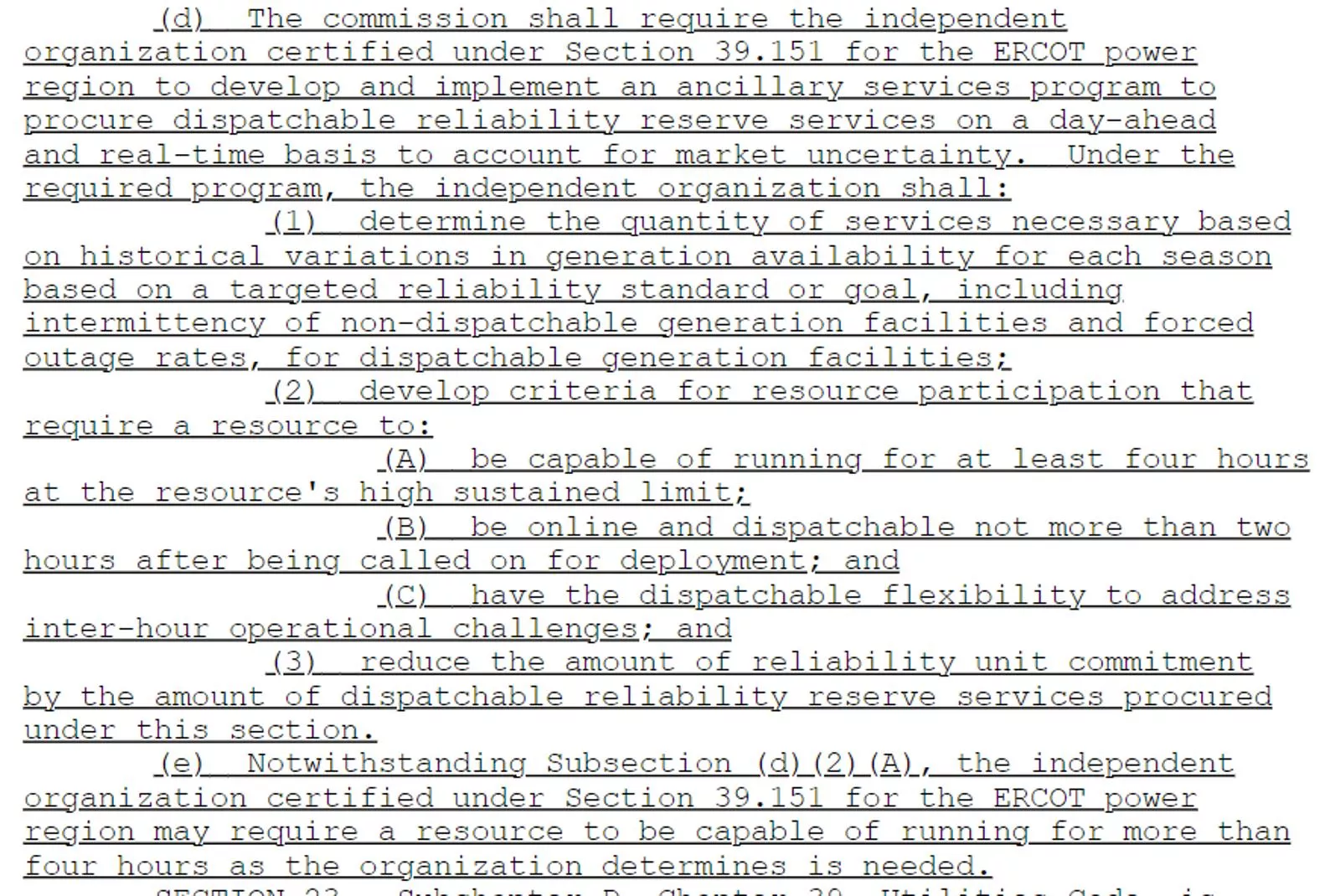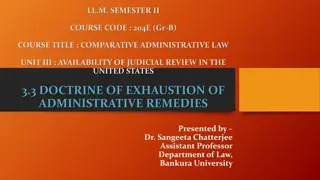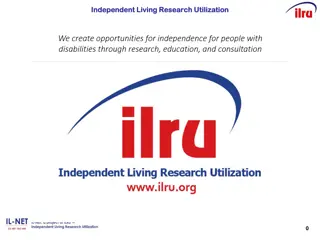DRRS Design to Meet HB1500 Intent
DRRS design aims to meet the requirements of HB1500 in determining the quantity of services needed for reliability standards in ERCOT grid operations. The primary goal is to ensure operational reliability during extreme events with a focus on dispatchable generation facilities. DRRS resources must be available promptly when needed and capable of handling firm load shedding during severe winter storms. The design addresses duration requirements, resource availability, and cost allocation for meeting targeted reliability standards as specified in HB1500.
Download Presentation

Please find below an Image/Link to download the presentation.
The content on the website is provided AS IS for your information and personal use only. It may not be sold, licensed, or shared on other websites without obtaining consent from the author.If you encounter any issues during the download, it is possible that the publisher has removed the file from their server.
You are allowed to download the files provided on this website for personal or commercial use, subject to the condition that they are used lawfully. All files are the property of their respective owners.
The content on the website is provided AS IS for your information and personal use only. It may not be sold, licensed, or shared on other websites without obtaining consent from the author.
E N D
Presentation Transcript
DRRS Design to Meet HB1500 Intent Shams Siddiqi, Ph.D. Hunt Energy Network (HEN) (512) 619-3532 shams@crescentpower.net DRRS Workshop II March 27, 2024
HB1500 MArch 27, 2024 2
Primary Goal of DRRS HB1500: determine the quantity of services necessary based on historical variations in generation availability for each season based on a targeted reliability standard or goal, including intermittency or non-dispatchable generation facilities and forced outage rates, for dispatchable generation facilities Any reliability standard ultimately adopted will likely require no more than 5-10 GW of firm Load shed that can be rotated during extreme events of significant duration Severe winter storms of long duration, with little solar and wind support, are the most challenging for the ERCOT Grid about 10 GW of additional dispatchable resources needed to meet any reasonable reliability standard According to HB1500, DRRS should be designed to meet this reliability challenge With its current suite of Ancillary Services, ERCOT meets all operational reliability needs as required by NERC and ERCOT has not identified the need for any additional AS for operational reliability Thus, DRRS is not required for operational reliability but should be designed for meeting a targeted reliability standard or goal as specified in HB1500 MArch 27, 2024 3
DRRS Design to Meet Goal DRRS duration requirement should be 24 hours at least for the winter months and may be as low as 4 hours in all other months and must be available within 2 hours DRRS Resources must be offline available (QSGR qualify) until committed/released by ERCOT with DRRS payment clawed back with possible penalties if not available during critical times DRRS will be available to RUC at significantly scaled down startup and min energy cost no RUC makewhole payment to DRRS Resources CLRs must consume at DRRS awarded capacity until released by ERCOT Non-Spin could be repurposed for DRRS for quick implementation Non- Spin ASDCs for non-winter months but much higher ASDC for winter reflecting significant costs of long duration dispatchable capacity shortfall Starting quantity ~6GW for winter (utilize current Non-Spin MWs for other seasons) with pre-specified growth to meet reliability standard based on VOLL and LOLP DRRS costs are allocated LRS and can be self-arranged and traded Commitment of offline DRRS accounted for in RDPA MArch 27, 2024 4
DRRS Implementation Non-Spin could be repurposed for DRRS for quick implementation and to minimize cost impact on Load, or DRRS could be a separate AS Starting quantity ~6GW in winter season with pre-specified quantities over future years to meet reliability standard at the earliest possible date considering time needed to build new dispatchable resources properly accounting for retiring dispatchable resources DRRS is procured in DAM and co-optimized with Energy/AS and can be bilaterally traded and represents a physical commitment hours ahead since RUC looks hours ahead Since DRRS quantities and prices would be significantly higher in winter months, DRRS is targeted to longer-duration dispatchable resources Seasonal DRRS ASDCs reflecting varying DRRS seasonal quantity needs would be used to procure DRRS (DRRS ASDC is not tied to segmented ORDC for winter) MArch 27, 2024 5
Proposed DRRS Implications ERCOT Grid needs long-duration dispatchable resources to meet any reasonable reliability standard proposed DRRS design would incentivize such resources and thus better meet the stated goal of HB1500 Non-performance clawback and possible penalties will encourage high availability during scarcity events and the development of firmer fuel supply During non-winter months, solar ramp hours are relatively easy to forecast and load forecast errors are known at least a few hours ahead thus, DRRS can meet those needs making Non-Spin redundant (online Non-Spin provides little reliability benefit anyway); thus Non-Spin could be retired Proposed DRRS would incentivize newer longer-duration dispatchable resources that thrive on capturing high prices in an IRR saturated market Proposed DRRS would not adversely impact market prices since RDPA would reverse any price suppression due to DRRS deployment This DRRS proposal is much more targeted to longer duration dispatchable resources and has a significantly better likelihood of resulting in new build of such capacity whereas PCM is not as targeted and likely to have minimal impact on new build of such capacity especially with $1B/year cap MArch 27, 2024 6

 undefined
undefined




























